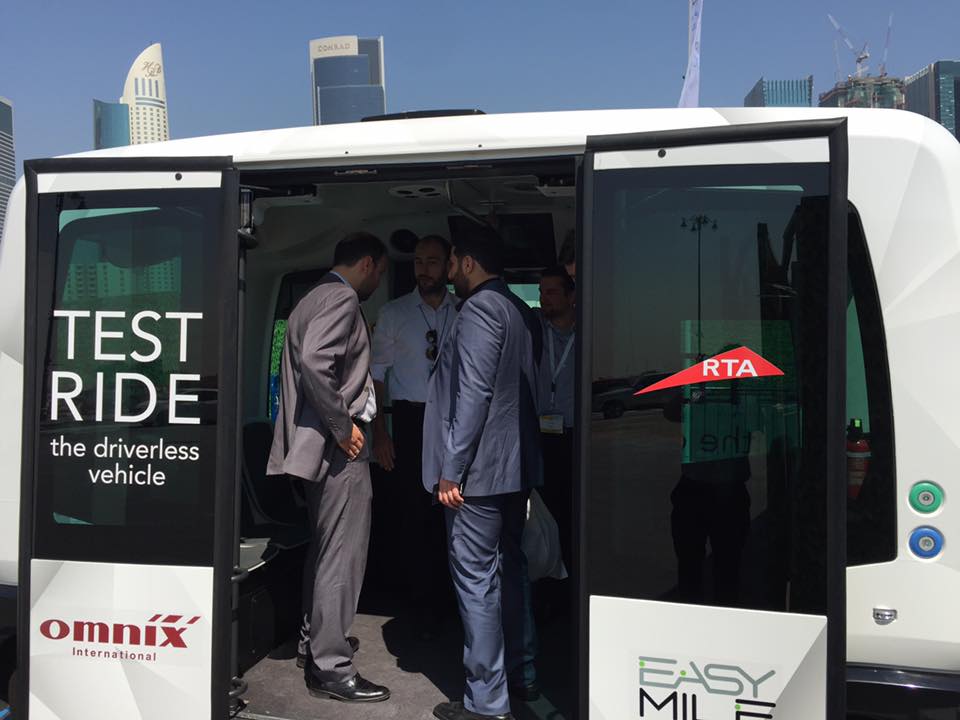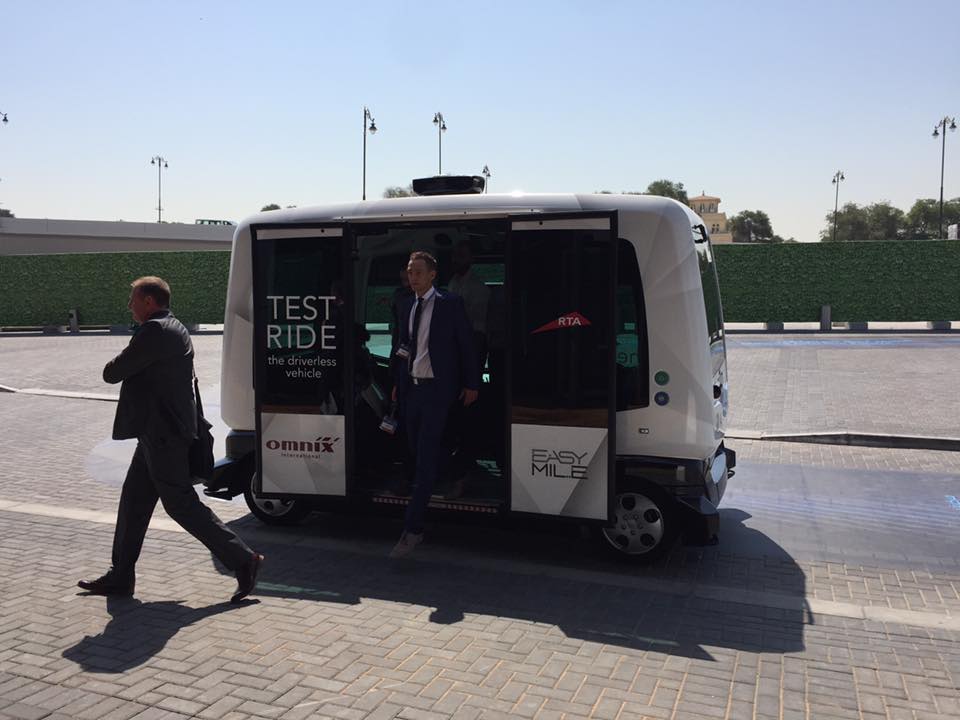- City Fajr Shuruq Duhr Asr Magrib Isha
- Dubai 04:26 05:44 12:20 15:47 18:50 20:08

According to Dubai’s Autonomous Transportation Strategy, smart self-driving transport will account for 25 per cent of all transportation trips in the emirate by 2030.
The smart, driverless vehicles are projected to generate economic revenues and savings of up to Dh22 billion a year.
So how would this system really work?

Dubai residents can now find out by riding aboard the prototype of a shared driverless vehicle, which is currently operating under the umbrella of the Roads and Transport Authority of Dubai (RTA) at the ongoing Mena Transport Congress and Exhibition that runs until Thursday.
The Easymile electric shuttle or the EZ10 vehicle currently in use by the RTA is not a car, which simply means no steering wheel, no front or rear side, and is able to transport up to 12 people at a time.
The vehicle is currently on a test run at the Dubai World Trade Centre.

Speaking about the vehicle, the company’s Head of Marketing and Communications, Jean-Marc Desvaux described it as the ‘ideal solution for urban mobility’.
“In a city such as Dubai, a door-to-door transport solution becomes an ideal solution for urban mobility; but this comes with its own set of problems, with users vying for more car space,” explained Desvaux. “Walking is not an option here due to adverse weather conditions, and driving your vehicle to the nearest train station or metro is sometimes hindered due to limited parking space.”
Desvaux explained that while car sharing or bike transport could provide a temporary solution, it would simply add to the rush-hour commute that plagues most urban cities.
EZ10 cruises at a speed of 25km per hour and is largely used as part of a ‘last mile concept’ or a feeder system that would allow residents to cover that short distance to the closest metro or tram, which may be too long to reach on foot in the soaring summer climes.

“With the shared driverless system, the vehicle will operate similarly to a bus or tram, following a virtual route that is mapped out in advance,” explained Desvaux. “The vehicle can be scheduled in for a pick-up via a mobile app as a shared system, or users can pay a premium and use it as a private vehicle.”
Such an autonomous system is also touted as one that could reduce the reliance of bus transport, which Desvaux said, could see the number of stops reduced and further reduce traffic congestion on the roads during rush hour.
When implemented, the adaptation of such driverless vehicles as part of the Dubai Autonomous Transportation Strategy will reduce transportation costs by 44 per cent or Dh900 million, saving Dh1.5 billion through reduction of environmental pollution, and Dh18 billion through raising efficiency of the transport sector by 20 per cent.
It will further increase productivity of individuals by 13 per cent and save people up to 396 million of hours wasted during travel on roads yearly.
He indicated the strategy will contribute to reducing road accidents, and their associated economic losses, by 12 per cent, saving Dh2 billion annually.
Such autonomous vehicles are already in use in Europe, North America and parts of Asia.
![]() Follow Emirates 24|7 on Google News.
Follow Emirates 24|7 on Google News.